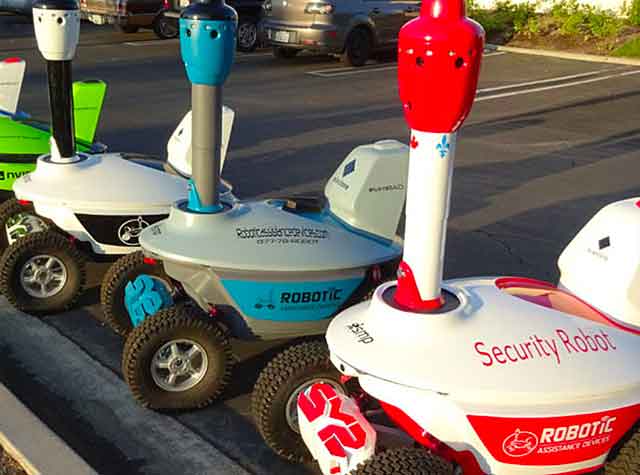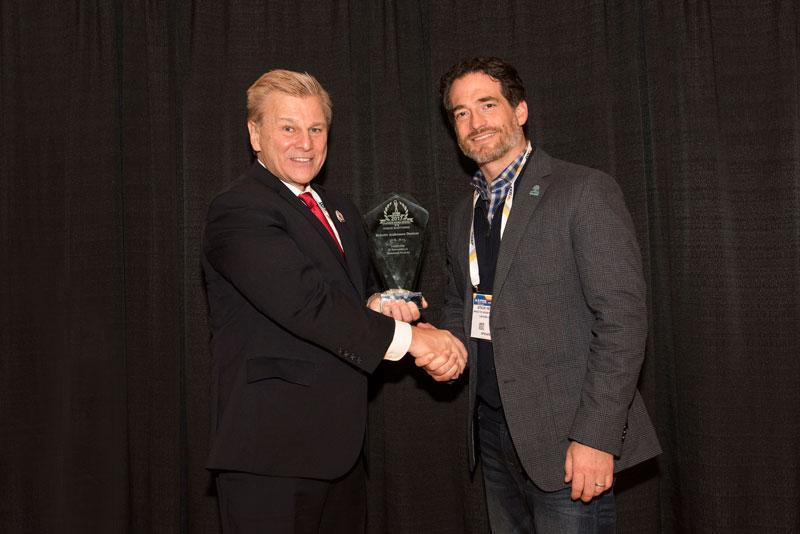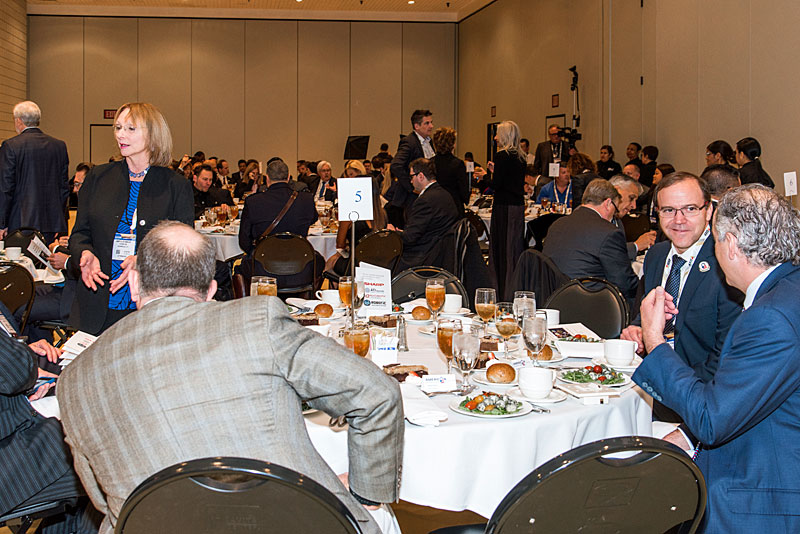
By Steve Reinharz, President and CEO, Robotic Assistance Devices
One of the most important steps in keeping an organization’s data, physical assets and personnel safe is securing the perimeter of a facility or campus.
Ensuring the perimeter of a facility goes unpenetrated, or at least unpenetrated by the wrong people, is an essential part of a security team’s responsibilities.
 Starting at the farthest boundaries ensures efficient and comprehensive security coverage, and this isn’t an unfamiliar technique.
Starting at the farthest boundaries ensures efficient and comprehensive security coverage, and this isn’t an unfamiliar technique.
According to the research report Perimeter Security Market published by MarketsandMarkets, the perimeter security market is expected to grow from $110.64 billion in 2017 to $196.60 billion by 2022.
Physical perimeter security refers to a type of barrier or structure that surrounds an area or building to protect the property within and keep intruders out.
Most often, organizations today use a security guard team, wall or fence to protect its assets.
But achieving effective perimeter security with only human guards or a permanent fixture can be challenging, and with technological advancements in robotics and artificial intelligence, outdoor remote monitoring through robotic patrols has proven to be a cost-effective and valuable solution.

in various terrain conditions: road, off-road, grass and gravel. The robot can
operate in all types of weather conditions (rain, snow, fog, smoke, etc.),
with temperatures ranging from -4F to 100F.
Locations that require strict and continuous perimeter security, such as military facilities, critical infrastructure sites, corporate campuses and educational facilities, are usually designed in a similar fashion and have similar characteristics: geographically large, expansive spaces.
Perimeter security can be difficult in environments where a wide amount of space containing vast numbers of people and vehicles needs to be secured at all times.
A limited amount of security personnel or a short, weak fence may not do the trick.
Particularly at high-risk facilities, innovative solutions such as robotic security guards are needed.
Security robots are designed to augment the capabilities of existing personnel and improve operational efficiencies through continuous perimeter intrusion detection.
They can easily patrol the existing boundaries to identify potential trouble spots, detect humans and/or vehicles in an area where they should not be, and alert responsible staff of potential risks.
Robotic guards can provide new levels of intelligence and insight into situations for a more informed response through integration with existing sensors and systems, such as video surveillance.
(RAD robotic solutions are well-suited for use in multiple industries such as corporate enterprises, government, transportation, critical infrastructure, education and healthcare. Courtesy of Robotic Assistance Devices and YouTube)
According to the Perimeter Security Market report, the video surveillance systems segment is estimated to lead the perimeter security market between 2017 and 2022.
Video technology onboard these robotic systems opens new doors to use cases and extended protection, adding not only raw video data for constant surveillance, but also video analytics that can alert officials in a monitoring center of any suspicious behavior, movements or trespassing taking place.
Using this technology can signal to officials a problem and provide valuable next steps in an emerging incident.
(Learn More. Find out the 3-drivers for a sound plant wide security solution in an interview with RAD President and CEO Steve Reinharz. RAD uses the latest technology in artificial intelligence and robotics to achieve their strategic vision for a safer plant wide security solution. Courtesy of Scott MacKenzie and Vimeo)
Perimeter security can be hindered by the conditions affecting the area, including harsh weather, challenging terrains or hazardous materials, which can affect a human guard’s ability to properly monitor and secure the site.
Security robots can operate through these extreme instances, ensuring the safety of human guards and allowing them to focus on more critical tasks.

Assistance Devices, Accepting the award for ‘Leadership & Innovation
in Homeland Security’ in the 2017 ‘ASTORS’ Homeland Security
Awards Program at ISC East
The security guard robot is being increasingly adopted in the private sector and the successes can be applied to assist government as well.
In addition to providing effective perimeter security, security guard robots can assist in disaster response and provide additional patrolling support in communities.
Cities, like Singapore and others, are already taking advantage of the technology features, streamlined patrolling and increased capacity security guard robots provide.
As security solutions evolve to include answers to the biggest challenges that today’s companies face with regard to perimeter protection, it’s important for end users to consider new and emerging technology that can address the key issues they face.
Security guard robots may sound like a far-fetched idea, but they are becoming a more likely way for companies to realize true return on investment and value to augment traditional protection and guarding services.
2017 ‘ASTORS’ Homeland Security Awards Recognition
Robotics Assistance Devices (RAD) Autonomous Robotic Solution which helps organizations Streamline Operations, Increase ROI and Strengthen Safety has been recognized for Leadership & Innovation in Homeland Security in the 2017 ‘ASTORS’ Homeland Security Awards Program at ISC East, which was held in the Jacob Javits Convention Center on November 15th.

Additionally, the RAD/SMP Robotics S5 Robotic Guard took the Platinum ‘ASTORS’ Award Winner for Best Robotic Perimeter Protection Solution.
American Security Today’s comprehensive Homeland Security Awards Program was organized to recognize the most distinguished vendors of Physical, IT, Port Security, Law Enforcement, and First Responders, in acknowledgment of their outstanding efforts to ‘Keep our Nation Secure, One City at a Time.’
President and CEO Steve Reinharz, represented Robotic Assistance Devices to accept the awards, and were joined by over 100 Top Government Officials and Industry Leading Firms from across North America and the Middle East in acknowledgment of their Outstanding Product Development Achievements and Exciting New Technologies to address the evolving homeland security threats our Nation is facing.
Congratulations to Robotic Assistance Devices on your achievements and we look forward to covering your continuing efforts in the Perimeter and Physical Security markets.

















